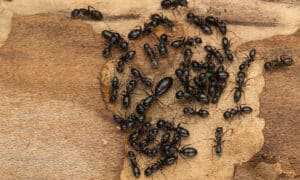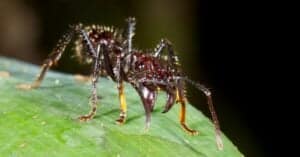It is estimated that there are about 20 quadrillion ants on planet Earth, outnumbering humans around 2.5 million to one. These 20 quadrillion ants divide themselves into colonies. The average colony ranges from 20,000 to 100,000 ants and is often confined to small spaces. But there is one ant colony, the largest on Earth, that spans more than 3,700 miles. It has an estimated 307 million ants in it. This massive colony is known as the Argentine Ant Supercolony.
What is an Ant Colony?
Before we dive into the story behind the largest ant colony on Earth, we should talk about ant colonies in general.
As we pointed out earlier, there are almost countless ants in the world. They live just about everywhere: cities, fields, deserts, forests, mountains; and they can build their colonies just about anywhere. They are highly social creatures, like humans, and they make their homes and work in these colonies.
Think of an ant colony like a family, albeit a massive one. The average ant colony has at least 20,000 ants, though this is dependent on the species. Each colony is headed by a queen, her grown daughters who are the workers, and her still-growing offspring.
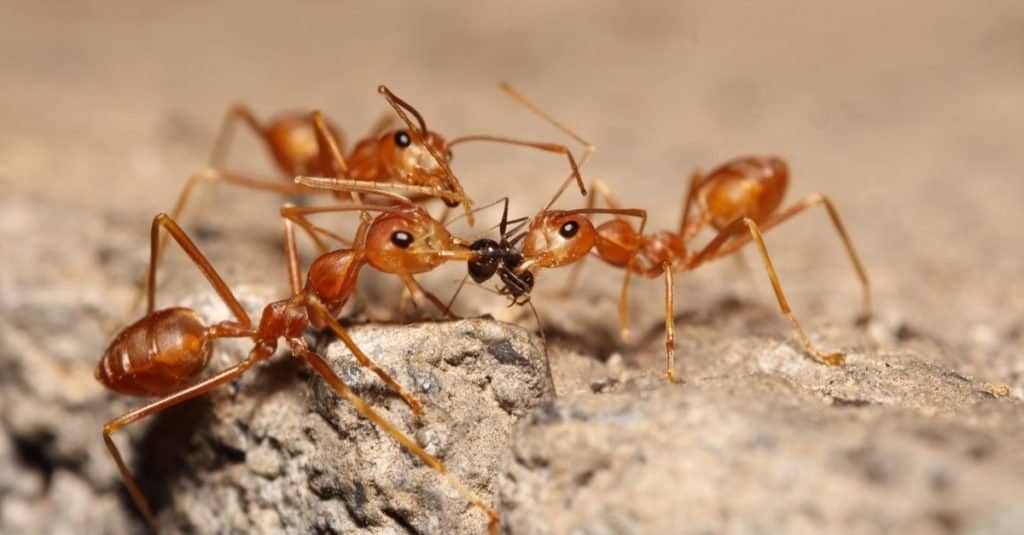
Ants can build their colonies just about anywhere.
©sarawuth wannasathit/Shutterstock.com
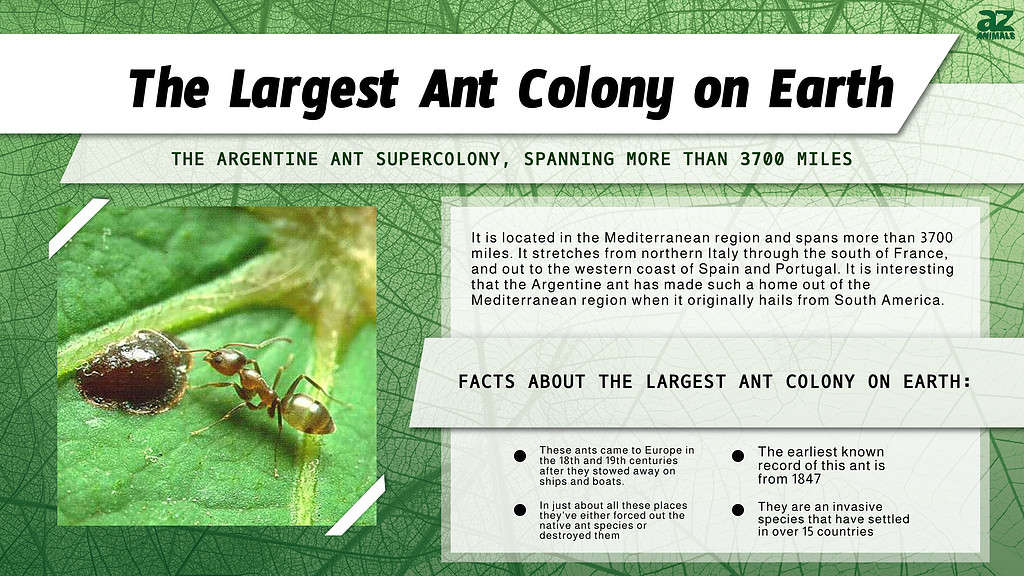
How Does an Ant Colony Work?
Ant colonies are highly structured and organized, to the point that some ants in a certain colony act as what’s called a “superorganism”, or a single organism. All the ants in a colony work together to survive. They do this through defending the colony, bringing in food, reproducing, and protecting the queen.
The role of a queen is to lay eggs, which she will spend most of her life doing. Most of the younger ants are dedicated to caring for her and her offspring. Alternately, the majority of the older ants are the ones who venture outside the nest to defend it or bring food in.
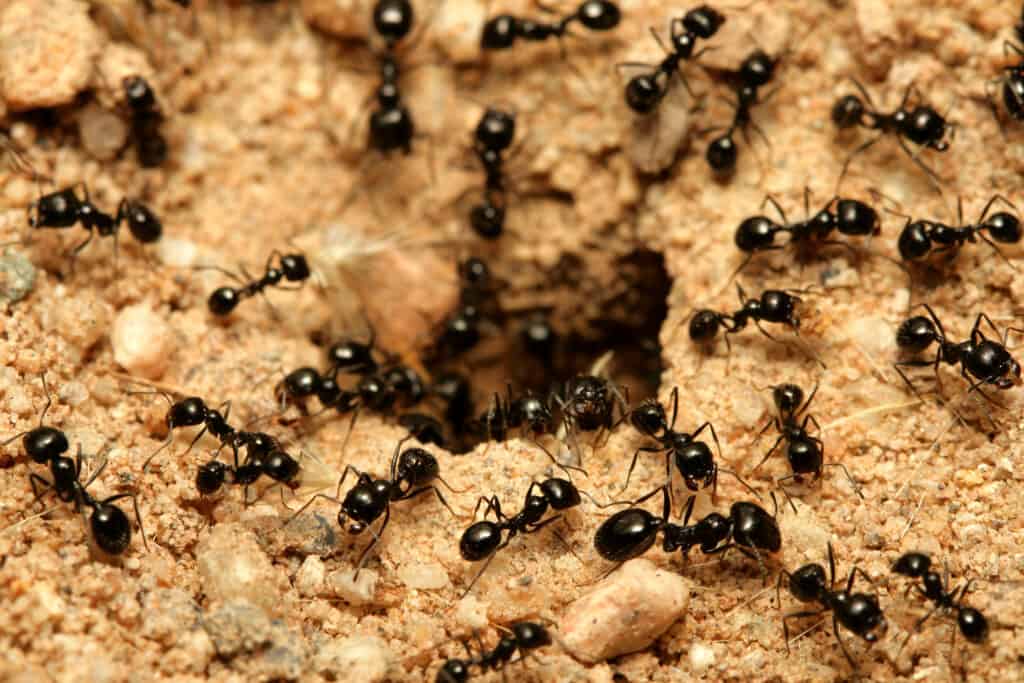
All of the ants in a colony work together to survive.
©iStock.com/Cabezonication
How do Ants Communicate With Each Other?
To maintain the structure of their colonies, ants definitely communicate with each other. Ants use their antennae to smell chemicals called pheromones, which is how they communicate. Worker ants discharge pheromones with distinct messages to let the other ants know exactly what’s going on.
Ants also have these pheromones on their bodies, which provide a way for ants to recognize each other; they can also use touch to differentiate between other ants. The queen’s pheromones are specific to her, which sets her apart as special.
Just like with human settlements, ants have been known to “war” with each other. They are loyal and friendly to those in their own colony but don’t react well to outsiders. To protect their colony and themselves, worker ants have been known to bite, sting, and spray invaders.
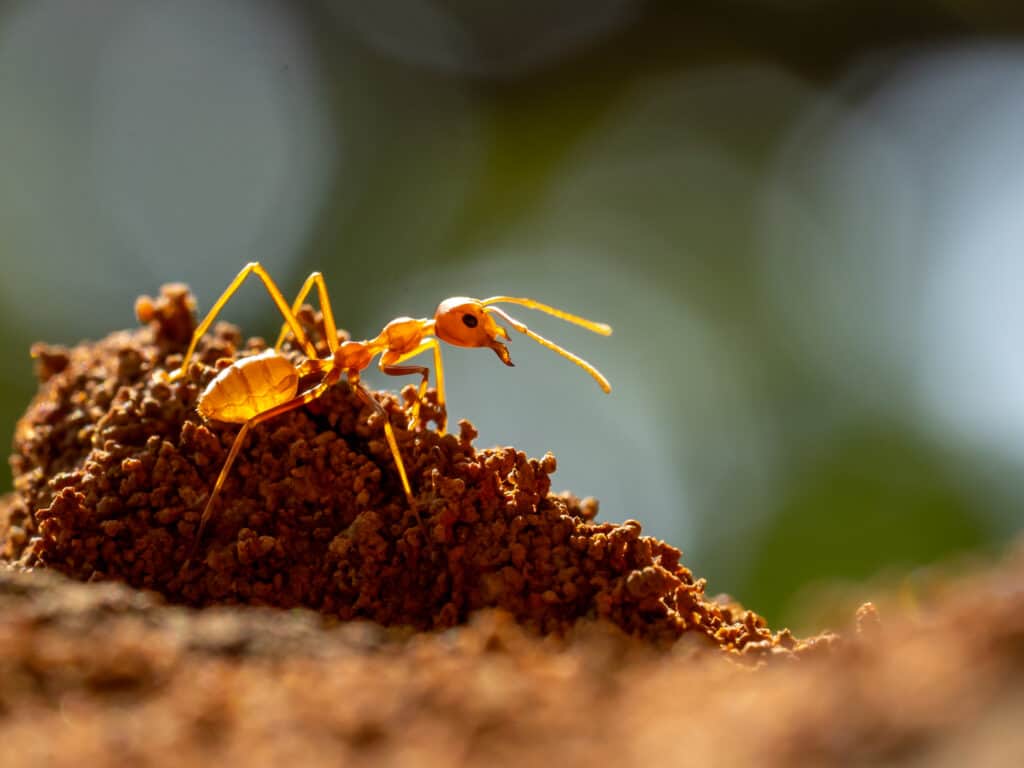
Ants use pheromones to communicate with each other.
©iStock.com/ritthichai
History of the Argentine Supercolony
The Argentine Ant Supercolony, the largest ant colony on Earth, is located in the Mediterranean region and spans more than 6,000 km (3700 mi). It stretches from northern Italy through the south of France, and out to the western coast of Spain. It is interesting that the Argentine ant has made such a home out of the Mediterranean region when it originally hails from South America. How did it manage to travel so far?
These ants came to Europe in the 18th and 19th centuries after they stowed away on ships and boats. The earliest known record of this ant is 1847 from the island of Madeira, which rests in the Atlantic Ocean off the coast of Portugal.
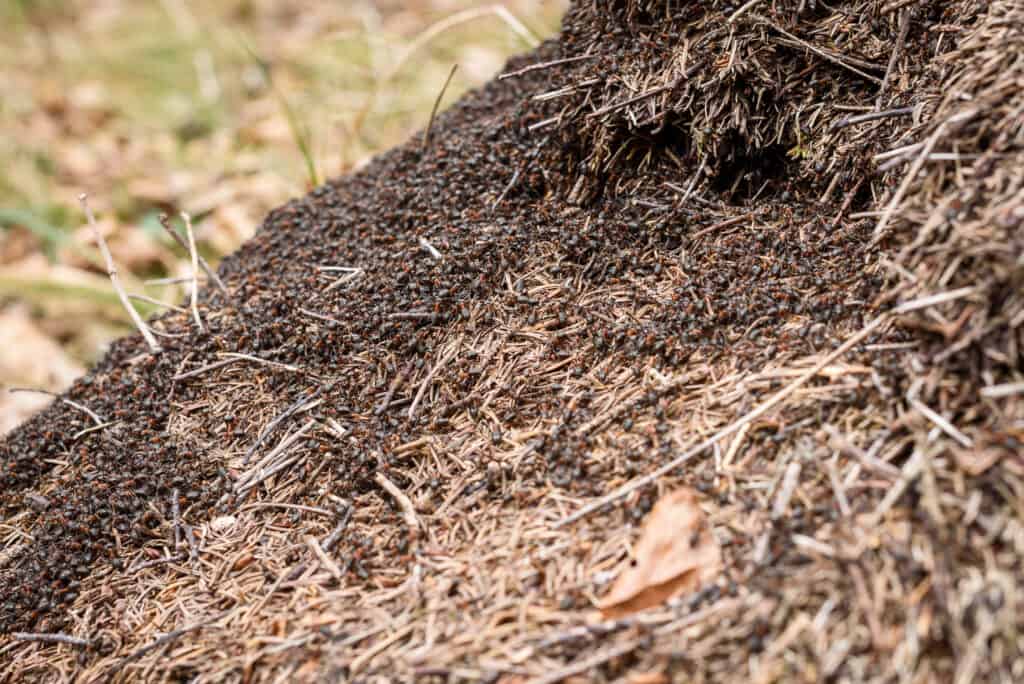
This ant colony is large, but nowhere near the size of the Argentine supercolony, which spans more than 3,700 miles.
©iStock.com/_jure
What’s so Special About the Argentine Ant Supercolony?
Argentine ants are known for being adaptable and resilient, but also invasive. They have settled in 15 different countries. In just about all these places they’ve either forced out the native ant species or simply destroyed them. While this could be considered typical behavior of aggressive ant species, the foreign Argentine ant is able to do this on an enormous scale, due to the sheer size of the supercolony.
A foreign Argentine ant is one that lives in countries outside of its native South America; for instance, all of the Argentine ants in the Mediterranean supercolony are considered to be foreign members of their species.
Another thing that sets these foreign Argentine ants apart from their cousins in South America is the fact that they have more than one queen in their colonies. This is one way the Argentine ant supercolony has spread so quickly; they have many queens laying eggs at the same time.
Another thing that makes this supercolony so unique is its size. Scientists have theorized that the supercolony doesn’t just span the Mediterranean region. After introducing Argentine ants from different parts of the world to each other, the scientists found that the ants recognized each other! They were not aggressive in any way.
As we already know, this is uncommon behavior, as ants even from the same species are hostile to “outsider” ants from other colonies. Because of this, many experts think that the Argentine ant supercolony spans the globe.
The photo featured at the top of this post is © iStock.com/scigelova
Thank you for reading! Have some feedback for us? Contact the AZ Animals editorial team.




